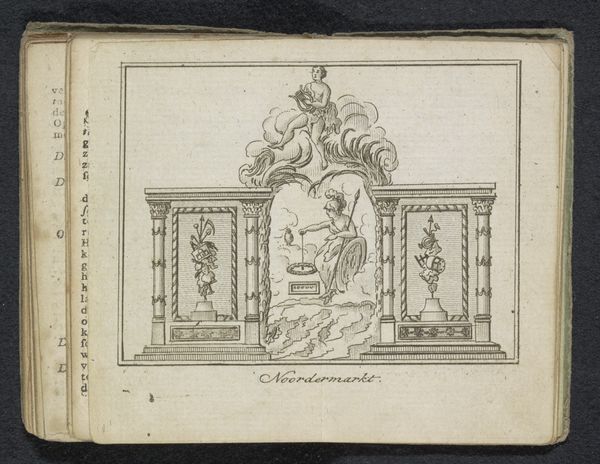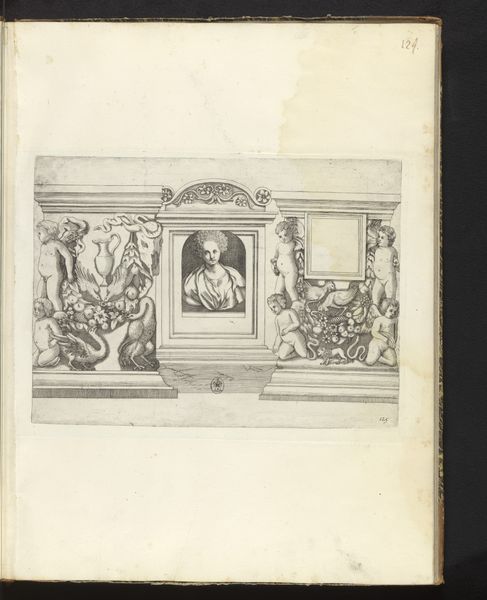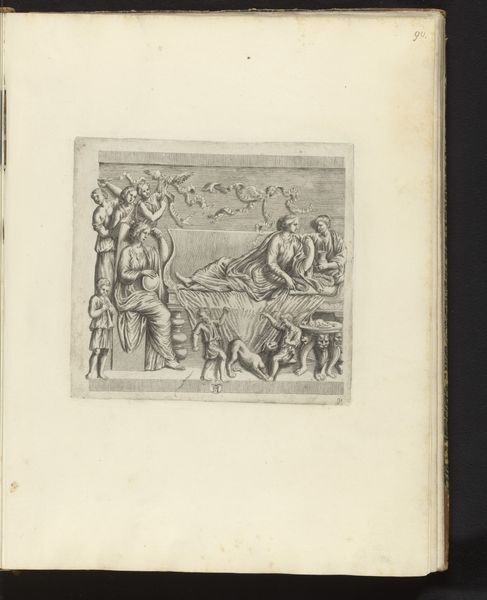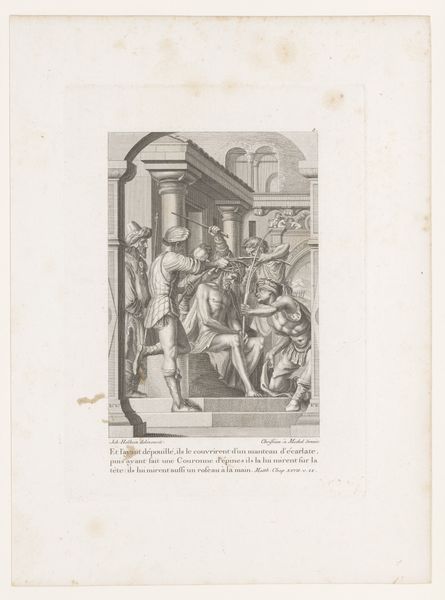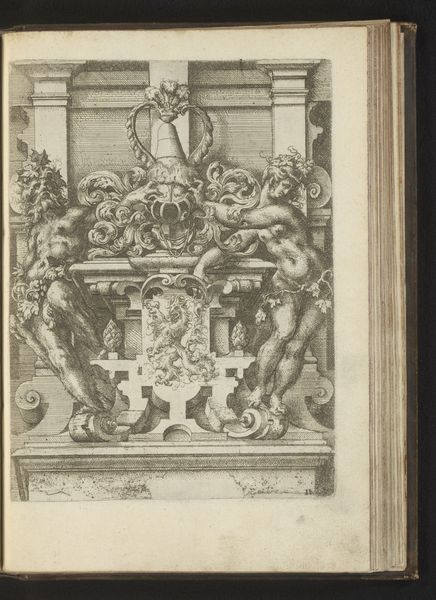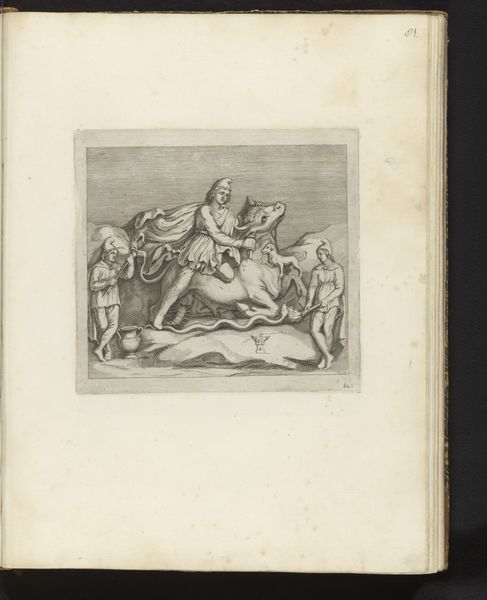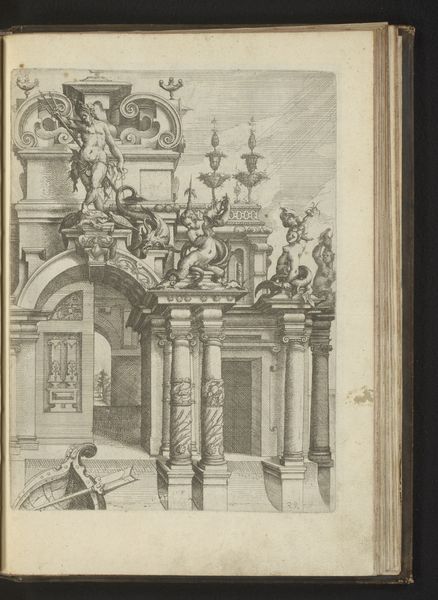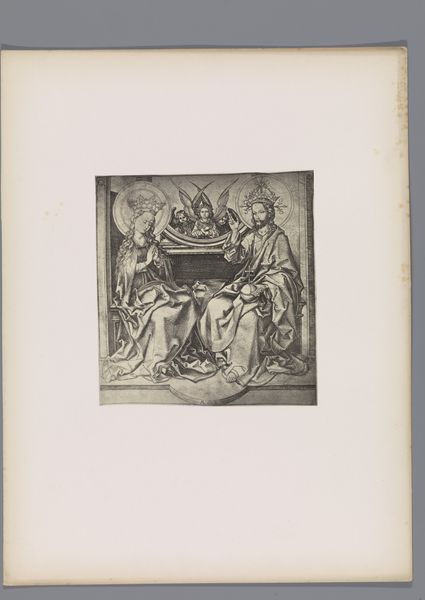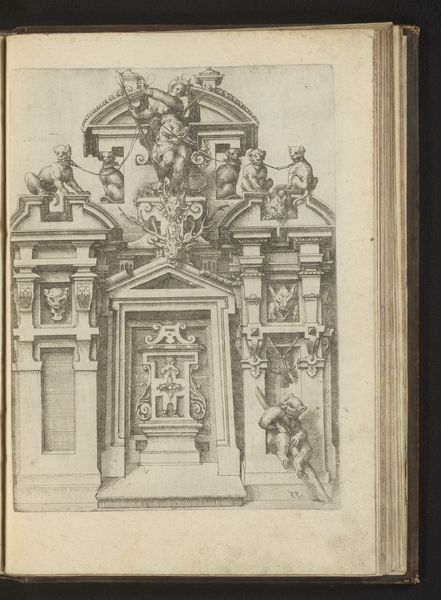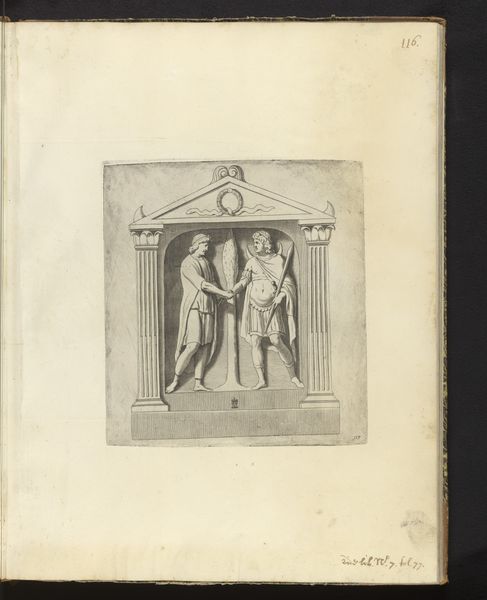
drawing, paper, ink, pen
#
drawing
#
aged paper
#
toned paper
#
narrative-art
#
dutch-golden-age
#
sketch book
#
figuration
#
paper
#
11_renaissance
#
personal sketchbook
#
ink
#
pen-ink sketch
#
pen and pencil
#
pen work
#
sketchbook drawing
#
pen
#
storyboard and sketchbook work
#
academic-art
#
sketchbook art
Dimensions: height 229 mm, width 313 mm
Copyright: Rijks Museum: Open Domain
Editor: This is "Three Pedestals," a pen and ink drawing by Reinier van Persijn, created sometime between 1636 and 1647. The aged paper gives it a delicate feel, almost like looking at something incredibly fragile. It's interesting how each pedestal has its own distinct scene. What draws your eye when you look at the structure of this drawing? Curator: The tripartite division immediately establishes a framework for comparison and contrast. Observe how the artist utilizes linear perspective, albeit imperfectly, to create depth within each framed space. This interplay between two-dimensional surface and illusionistic depth is a defining characteristic of academic art from this period. Note how the lines emphasize volume. Editor: I see what you mean about the framing creating a visual rhythm. I wonder if there’s a connection between the scenes depicted. The pedestal in the center looks more decorative, in contrast with the figures in the flanking panels. Curator: Precisely. We see a visual hierarchy established through varying degrees of figuration and ornamentation. The central panel serves as an anchor, its elaborate architectural details contrasting with the more narrative emphasis of the lateral panels. The texture in the column adds balance and contrast to the drawing. Editor: So you’re saying it’s less about what’s being depicted and more about how it’s presented. The technique itself creates the meaning? Curator: Precisely. Consider how the artist's choice of medium – pen and ink – lends itself to precise delineation and sharp contrasts. It’s in the strategic placement of line and form that we truly understand the artist’s intent, and, by extension, the essence of the work itself. Look at the crisp, dark lines that define the figures. Editor: That’s fascinating. I initially saw separate little scenes, but understanding the way the artist uses form and composition adds another layer to my appreciation of the piece. Curator: Indeed. Form dictates function; structure dictates meaning. Understanding this fundamental principle unlocks the true potential of visual analysis.
Comments
No comments
Be the first to comment and join the conversation on the ultimate creative platform.
